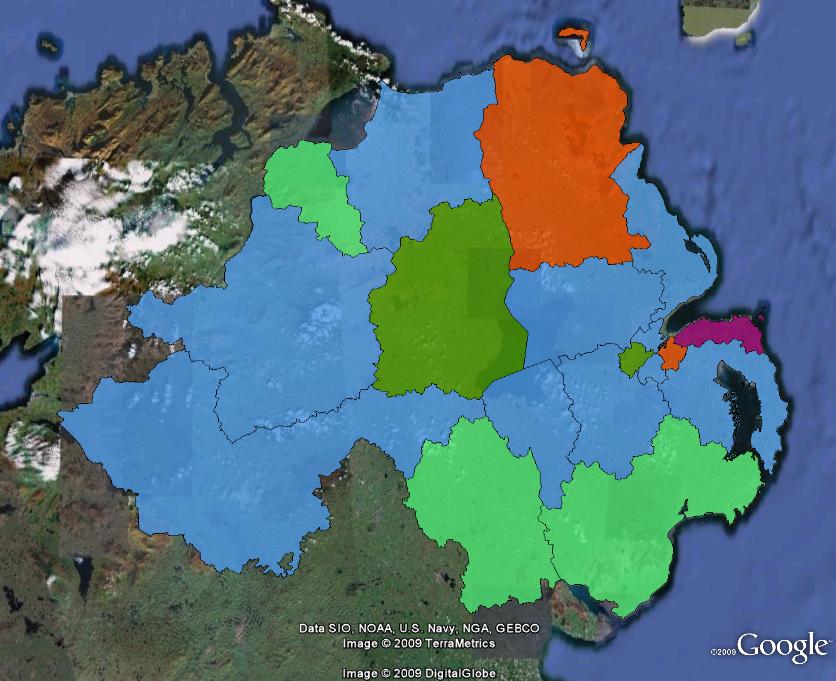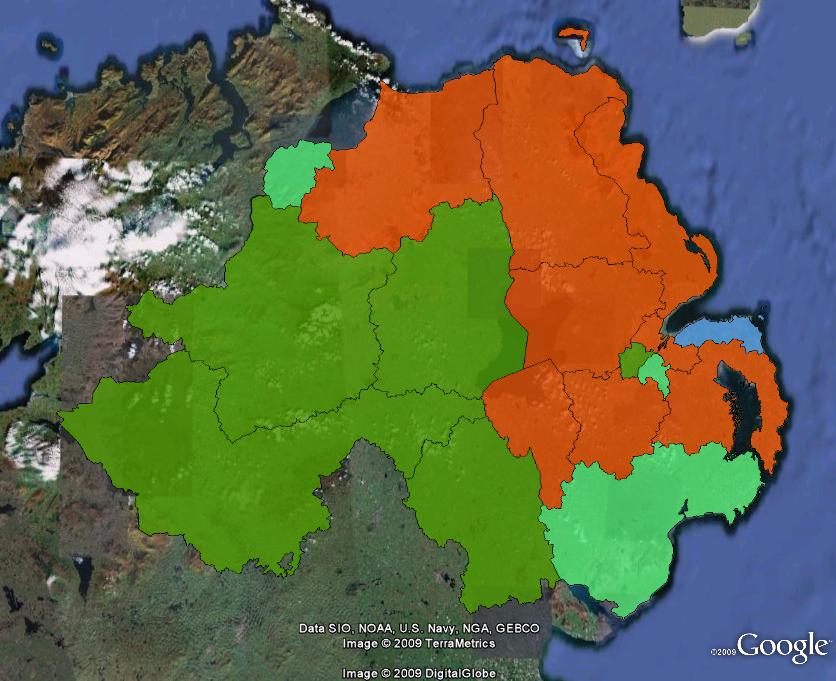I have today finished electoral maps for Northern Ireland. I have completed boundaries for the period 1997-2007 and the new boundaries for the 2010 general election. Northern Ireland uses the same 18 constituencies for both Westminster elections and Legislative Assembly elections. When electing the Legislative Assembly, each constituency elects six MLAs for a total of 108.
I have completed two sets of maps. The first set of maps covers the 1997, 2001 and 2005 general elections and all three elections for the Legislative Assembly in 1998, 2003 and 2007. The new boundaries will be used at the next UK and Northern Irish elections, due in 2010 and 2011 respectively. These maps posted below show how much Northern Irish politics has changed since 1997, with the first map showing the results of the 1997 election, while the second map shows the notional 2005 results using the 2010 boundaries. It shows how the Democratic Unionist Party (dark orange) and Sinn Fein (dark green) have come to dominate Northern Irish politics at the expense of the more moderate Ulster Unionist Party.


Most boundary changes have been relatively minor, with all eighteen constituencies keeping their existing names and no seats changing hands on a notional basis following the redistribution.
From 1997 until 2005 there was a complete reversal in Northern Ireland political fortunes. In 1997 unionists won 13 seats while nationalists won 5 seats, and the UUP won ten seats all in their own right. Sinn Fein and the DUP each held only two seats while one seat was held by the anti-home rule UK Unionist Party, who won a seat in the 1996 North Down by-election and retained it in 1997. In 2001, following the Good Friday accord and the establishment of the Legislative Assembly, the UUP won back North Down but lost five other seats: three to the DUP and two to Sinn Fein. The UUP remained the largest party with six seats, but were closely followed by the DUP, who held five seats.
In 2005, the UUP was almost wiped out, losing five of its remaining seats. They lost four seats on the outskirts of Belfast to the DUP. In a shock result, the SDLP won Belfast South, despite unionist parties winning a majority of the vote, due to an unexpectedly high DUP vote lowering the UUP’s vote. Sinn Fein also won a fifth seat off the SDLP.
You can download both the 1997-2007 and 2010-2011 maps from the maps page and from right here. As a policy, I colour in maps with the most recent election results, but you can download the 1997 maps and change colours to see the changes over the last decade.



The Sinn Fein MP-elects don`t take their seats. The UK obviously does not have a non-attendance seat vacation rule like Australia or their would be constant by-elections in the Sinn Fein seats.
The changes to some electorates is evidence of an intervening redistribution, yet its remarkable how many of the boundaries have remained completely unchanged.
Obviously many boundaries follow county or council lines but there must be a large leeway in the allowable enrolments to let that happen.
Comments are closed.